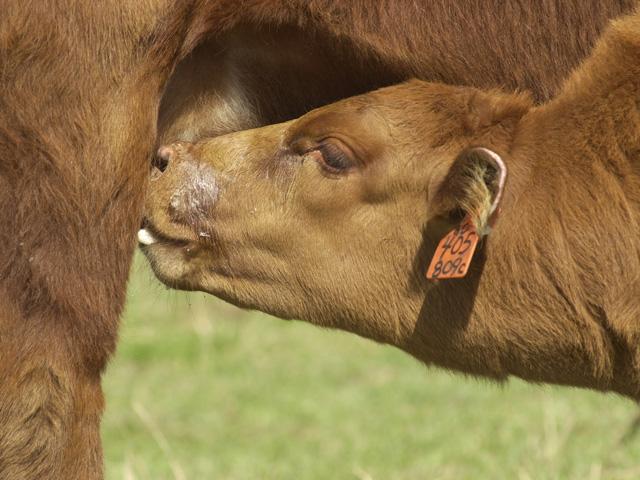Ask the Vet
Early Blackleg Vaccinations
READER QUESTION:
I always give my calves a blackleg shot and tag them at birth, but a friend of mine says I'm wasting my money. He says they are protected from disease from the colostrum they get from their momma and that the colostrum also interferes with vaccines working properly. Do I need to think about changing up my program?
DR. MCMILLAN'S ANSWER:
First, let's review how the immune system works in young animals. In the first weeks to months of life, it is not able to fully respond. Therefore, calves get antibodies (IgG) from their dams' colostrum to protect them from disease until their immune systems can respond. This is called passive or maternal immunity.
P[L1] D[0x0] M[300x250] OOP[F] ADUNIT[] T[]
Think of this as an hourglass full of antibodies. The amount of "sand" in that hourglass depends on four things: the level of immunity a dam has to a disease, the quality of her colostrum, how much colostrum her calf ingests, and how soon after birth it ingests it. After 24 hours, the hourglass runs out, and from that point on, protection the calf gets from the dam steadily declines.
These maternal antibodies will kill disease organisms, and yes, they will also destroy vaccines. After all, vaccines are made from viruses or bacteria that have been made harmless but that are still recognized by the body as something it should fight. This is what produces protection to that disease.
So, before a calf can respond to a vaccine, the "sand" in the hourglass must drop to a level low enough to allow that response. This means that every calf, every foal, every puppy, every kitten, and every baby go through a period of time when they could get sick from a disease, but they cannot be effectively vaccinated.
Fortunately, vaccines are just one tool in keeping all of us healthy. Nutrition, parasite control, minimizing stress, good biosecurity and sanitation are also key ways we avoid diseases.
Today, one way around vaccine interference from passive immunity, at least for some respiratory diseases, is use of intranasal vaccines. These vaccines are given in the nose and absorbed by mucosal surfaces there. These surfaces have immunologically active tissues that produce a different antibody called "IgA." Maternal IgA disappears quickly after birth, so this area of the immune system can respond to a vaccine early in life. Since most respiratory diseases enter through the respiratory tract, this protection is very effective in preventing these types of diseases.
Intranasal vaccines are noted for their more rapid response but typically have a shorter duration of immunity compared to injectables. They are safe for use in pregnant cows and for calves nursing pregnant cows. They can also be less stressful on cattle than injectable vaccines. Because of the rapid onset of protection and decreased stress, intranasals can be a valuable tool for incoming stocker programs.
So, back to your specific question. If you have good herd immunity and your cattle are on a good plane of nutrition, vaccination at birth is probably not necessary. That said, clostridial vaccines are cheap. If you properly handle the vaccine and follow BQA guidelines, there should be no harm in using them, and some experts even recommended the practice.
**
Editor's Note:
Please contact your veterinarian with questions pertaining to the health of your herd or other animals. Every operation is unique, and the information in this column does not pertain to all situations. This is not intended as medical advice but is purely for informational purposes.
Write Dr. Ken McMillan at Ask the Vet, 2204 Lakeshore Dr., Suite 415, Birmingham, AL 35209, or email vet@progressivefarmer.com.
(c) Copyright 2021 DTN, LLC. All rights reserved.






